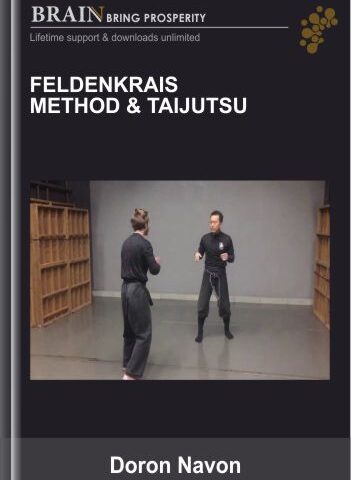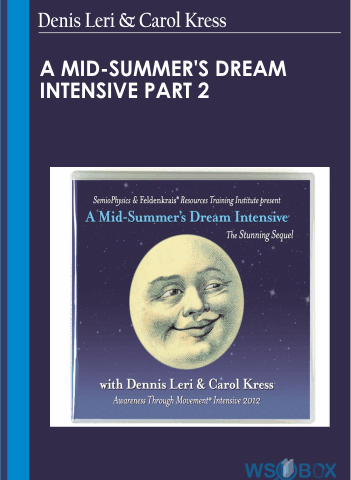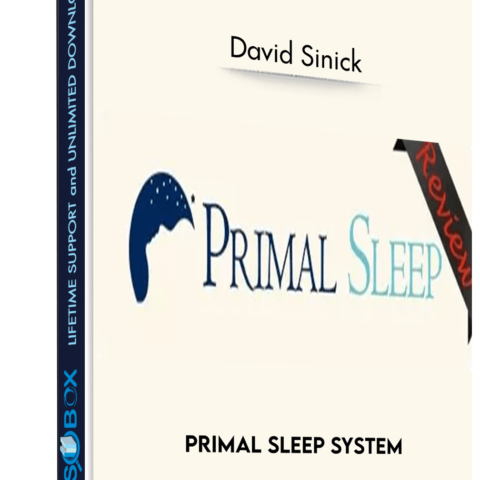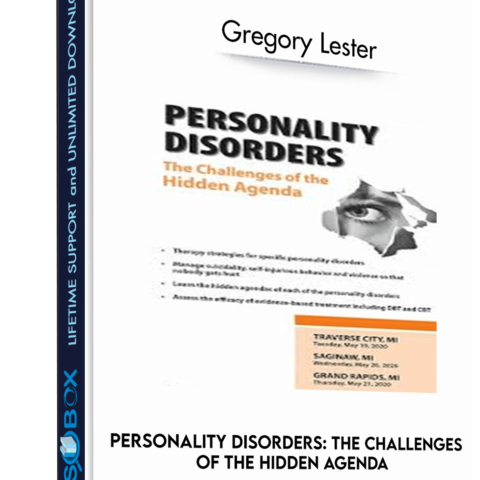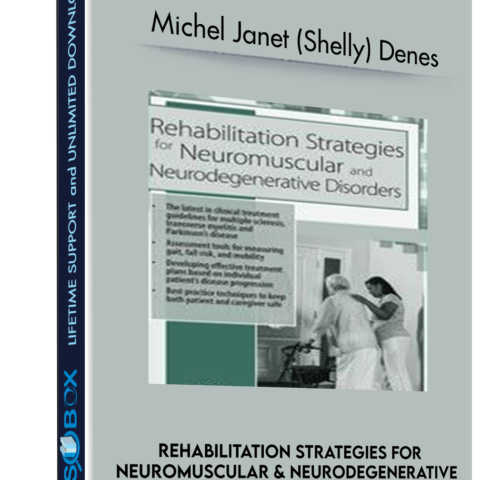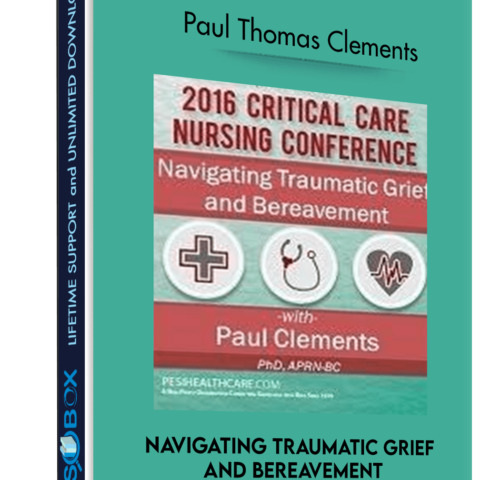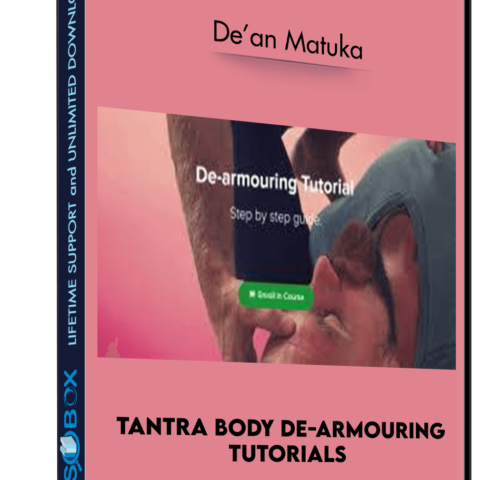Amherst Training 1980 Transcripts – Dr. Moshe Feldenkrais
$15.00
Beginning with life’s first movements of the mouth and breath, and following with lessons that mostly follow a developmental progression… Amherst Training 1980 Transcripts – Dr. Moshe Feldenkrais
Description
Purchase Amherst Training 1980 Transcripts – Dr. Moshe Feldenkrais Course at eBokly. We actively participate in group buys and are committed to sharing knowledge with a wider audience. What's more, our courses maintain the same quality as the original sale page. You have the option to buy directly from the sale page at the full price (sale page link is provided within the post).
 Amherst Training 1980 Transcripts – Dr. Moshe Feldenkrais course is available you will get immediately after payment only $15.
Amherst Training 1980 Transcripts – Dr. Moshe Feldenkrais course is available you will get immediately after payment only $15.
What will you get:
- IFF_Amherst-Training-Transcript_1980-Week-1.pdf
- IFF_Amherst-Training-Transcript_1980-Week- 2.pdf
- IFF_Amherst-Training-Transcript_1980-Week-3.pdf
- IFF_Amherst-Training-Transcript_1980-Week-4.pdf
- IFF_Amherst-Training-Transcript_1980-Week-5.pdf
- IFF_Amherst-Training-Transcript_1980-Week-6.pdf
- IFF_Amherst-Training-Transcript_1980-Week-7.pdf
Dr. Moshe Feldenkrais – Amherst Training 1980 Transcripts [7 Ebooks – 7 PDFs]
The Feldenkrais Method® is a remarkable approach to human movement, learning and change originally developed by Moshe Feldenkrais. The method is based on sound principles of physics, neurology and physiology, and the conditions under which the nervous system learns best. Feldenkrais (sometimes called Feldenkrais therapy) is recognized for the strategies it employs to improve posture, flexibility, coordination, athletic and artistic ability and to help those with restricted movement, chronic pain and tension (including back pain and other common ailments), as well as neurological, developmental and psychological problems. The Feldenkrais Method explores the biological and cultural aspects of movement, posture and learning, and how our habits can constrain us to a small portion of our potential.
Through our personal history, upbringing, culture, injuries, illness, etc., we each adopt patterns of physical and psychological behavior. These patterns are deeply embedded in our nervous system, and often become outmoded or dysfunctional, creating unnecessary physical, and psychological limitations. The Feldenkrais Method uses a process of organic learning, movement, and sensing to free you from habitual patterns and allow for new patterns of thinking, moving and feeling to emerge. Feldenkrais is taught in two complimentary formats: Awareness Through Movement® Functional Integration®Functional Integration (FI)Functional Integration (FI) is a one-to-one approach. Learning, change and improvement are achieved through the use of specific skilled manipulation and passive movements, individualized for the client’s particular needs. Functional Integration is gentle, subtle, effective, and widely recognized for its ability to address both minor aches and pains, and serious muscular-skeletal and neurological problems, chronic tension, and the developmental problems of children.
Awareness Through Movement (ATM)In these structured movement lessons, students typically begin by lying on comfortable cotton mats (lessons are taught using a variety of positions, including sitting in chairs or standing). Using a combination of guided attention and pleasant, purposeful movement, each lesson guides you through the essential dynamic relationships in a particular pattern of movement and action. Unlike traditional exercise, where movements can become mechanical and the objective is to burn calories, stretch or train willpower for its own sake, Awareness Through Movement teaches you the secrets to reducing unnecessary muscular effort and improve your awareness of your whole self in action. This emphasis on sensory learning results in movement and vitality that are more flexible, pleasurable and free from aches and pains. The lessons are easy to do, of benefit to everyone, and the results can be extraordinary.
Awareness Through Movement was developed by Dr. Feldenkrais as a means to re-engage the nervous system in the kind of learning we all do as infants, but later usually abandon. The compositional structure of the lessons creates a conversation of sensing, feeling, resting and moving that engages your whole system in a process of organic learning where old habits can be replaced by new awareness and skill.
Amherst Training 50 DVDs SET About the Amherst TrainingThe Amherst Training was the last Professional Training that Dr. Feldenkrais conducted during his lifetime. This was the final Training that Dr. Feldenkrais taught and, true to his nature, he set about it in a manner completely different from the previous ones. The material found in these pages was to become the basis for the curriculum in many of the Trainings that followed.1980 (Year 1)Here you will find the essential ingredients of his Method and the primary ideas that were stressed as the necessary background for learning his work.
Beginning with life’s first movements of the mouth and breath, and following with lessons that mostly follow a developmental progression. Interwoven throughout this sequence were also lessons which Dr. Feldenkrais said were more structural than developmental.
The lessons in the first weeks are dynamic and inclusive. The ability to use the eyes smoothly is woven into larger movements through space, as is the emphasis on the importance of improving the clarity of orientation in action. Several lessons or series are also devoted to the importance of the teleceptors for improving the quality of self-direction. The connection between the head and pelvis in several different positions or situations is also a central motif. Unlike the stand-alone lessons which appear in the AlexanderYanai, Esalen and London notes, the lessons in Amherst were more process oriented. A theme with many variations occurred over several days. This interweaving of lessons which he began to use in the San Francisco Training now become the predominate mode. In addition to the Awareness Through Movement® material, there are also several talks related to each of the central themes. These explorations were the conditions that Dr. Feldenkrais provided in order to lead the group down the road toward choice, self-reliance and autonomy. Finally, in the last week, there is a provocative talk entitled “What is health?”1981 (Year 2)The Amherst Training was the third and final group to be trained by Dr. Feldenkrais to carry forward his work. Amherst Year 2 took place in 1981 and was the last year of group teaching that Dr. Feldenkrais gave before his death in 1984.
Dr. Feldenkrais told the group in Amherst that he believed his teaching was then at a higher level than what he had done previously. As he said on June 11, 1981, “Those who have listened to me last year cannot but admit this year my teaching is more mature, more clear… and, easier to understand, and therefore I am growing with you.”The year opens with the elaboration of the “Bell Hand.” The ensuing quality of lightness is then carried over into the more complex actions of the “Judo Roll” and the “Headstand.” Here the student is challenged to maintain an awareness of the entire self throughout novel and dynamic spatial orientations. The two actions are brought together through the rapid alternation of flexion and extension. In the second half of the segment, Dr. Feldenkrais continues with “Bridging,” introduces several lessons with developmental themes, and ends the summer with unusual lessons with an acrobatic flair.
Interwoven throughout the summer are some of Dr. Feldenkrais’ most stimulating talks. These talks point toward a new way of perceiving and thinking which are to form the necessary foundation for the work in Functional Integration®.Amherst, The Value of Studying Moshe’s teaching.
A review by Jeff Haller, Ph.D., Certified Feldenkrais Trainer.
I was pleased to hear the Amherst material has been converted form tape to DVD. I have advocated that happening for a long time. I believe it is important for all practitioners to own for their study Moshe’s teaching through his recorded materials. Now comes the hard part. How to study the materials? It would be an injustice to the materials to simply do the lessons and memorize them so you have something to teach. Larger questions need to be asked in order to dig into the depth of what was presented day by day in Amherst. For example, you could ask, “How does Moshe go about teaching to 220 people, his notion of the potent posture? That it is biologically correct for human beings to be able to move from any one position to another without hesitation or preparation.” How did he go about getting every person at Hampshire College the approximate ability of moving from any position on the floor to another orientation? What was the thread of lessons he taught to bring his class to being “fit for living”. In my estimation, practitioners who go beyond conceptualization and intellectually speaking about “potent posture”, and embody this foundational pillar in their lives will be more effective as practitioners.
There are so many ways to look at the material. One could study how each lesson given was physiologically correct and see how he utilized, reciprocal inhibition, balance and counter balance, force and counter force, reversibility, even distribution of tonus, in each lesson to create a quality of effortless efficiency for his students. You could look at the materials and see how he taught class from the point of view of physics, biology, psychology, mysticism, educational or systems theory. The lectures he gave are a study within a study and stand on their own in their use for the serious student.
One could dive into the inner dynamics of each lesson given by Moshe, seeking to find the essence of the lesson resting there, or one could expand their view into an overview to see how all the elements were threaded together to create the outcomes that were generated. It is a complex study to enter into each lesson and discover the rough jewel hidden within and then see how the lessons are threaded together so one gradually polishes the jewel by reducing effort, finding support from the floor, reducing unnecessary muscular action, and using ones ability to image action, to come to simple effective movement.
So few people in the Feldenkrais® community met Moshe personally. Most practitioners in the world were trained by a trainer who has offered their interpretation of what they heard and understood from Moshe. Or perhaps, at this point, someone who is a second or third generation trainer who never met Moshe, trained them. Take the time and make a comparative study of Moshe’s teaching with of what you learned and came to believe in your training. Triangulate your learning. Hear from him through the DVD’s and correlate what you heard in your classes with what you hear him say. It will make you a better teacher and improve your clarity immeasurably. If you want to master the Feldenkrais Method®, the study of the Amherst materials will move you well along that path. Dr. Moshe Feldenkrais (1904-1984)A short biographyThe Feldenkrais Method was developed by Moshe Feldenkrais, D.Sc.,(1904-1984), who synthesized insights from physics, motor development, bio-mechanics, psychology, and martial arts to develop a powerful, effective, and practical application, that reconnects learning with human health and function.
Dr. Feldenkrais was a distinguished scientist, physicist and engineer. He earned his Doctorate of Science in physics from the Sorbonne and was a close associate of Nobel Prize Laureate Frederic Joliot-Curie at the Curie Institute in Paris, where they conducted research together. He was also a respected Judo instructor and author of many books on the subject. Living in England in the 1940’s, Feldenkrais found himself unable to walk after suffering a serious injury. He began an intense exploration into the relationship between bodily movement, and healing, feeling, thinking, and learning. As a result, he restored his ability to walk and made revolutionary discoveries, culminating in the development of the method that now bears his name.
Before he passed away in 1984, in Tel-Aviv, Israel, Feldenkrais personally trained a small group of practitioners to continue his work. Today there are over 6,000 Feldenkrais Practitioners around the globe. His insights contributed to the development of the new field of somatic education and continue to influence disciplines such as the arts, education, psychology, child development, physical and occupational therapy, sports enhancement, and gerontology.
Are you interested in? Amherst Training 1980 Transcripts – Dr. Moshe Feldenkrais Download, amherst college, amherst college ranking, amherst, massachusetts, amherst college acceptance rate, amherst sour diesel
Purchasing Amherst Training 1980 Transcripts – Dr. Moshe Feldenkrais course now, You can get it with the LIFETIME SUPPORT and UNLIMITED DOWNLOAD.
Purchase the Amherst Training 1980 Transcripts – Dr. Moshe Feldenkrais course at the best price at eBokly. Upon completing your purchase, you will gain access to the downloads page. where you can conveniently retrieve all associated course files. Additionally, we will send you a download notification email to your registered mail.
Unlock your full potential with our Amherst Training 1980 Transcripts – Dr. Moshe Feldenkrais courses. Our courses are meticulously designed to empower you with the skills and knowledge needed for excellence.
Why wait? Take the first step towards greatness by acquiring our Amherst Training 1980 Transcripts – Dr. Moshe Feldenkrais courses today. We ensure a smooth and secure purchasing experience that guarantees your peace of mind. Rest assured that your financial information is safeguarded through our trusted payment gateways, Stripe and PayPal.
Stripe, renowned for its robust security measures, offers a secure and dependable payment process. Your sensitive data is encrypted using state-of-the-art technology, ensuring its confidentiality throughout the transaction.
PayPal, a globally recognized payment platform, adds an extra layer of security. With its buyer protection program, you can make your purchase with confidence, knowing that your financial details are protected, allowing you to focus on your learning journey.
Is it secure? to Use of?
- Rest assured, your identity remains completely confidential. We do not share your information with anyone, ensuring the utmost security when you buy the Amherst Training 1980 Transcripts – Dr. Moshe Feldenkrais course.
- 100% Safe Checkout Privateness coverage
- We employ robust communication and encryption methods to protect sensitive information. All card numbers are encrypted using AES at rest-256, and the transmission of card numbers occurs in a separate hosting environment, without sharing or storing any data.
How Will the Course Be Delivered?
- Upon successful payment for the “Amherst Training 1980 Transcripts – Dr. Moshe Feldenkrais course”, Most of the products will come to you immediately. But for some products were posted for offer. Please wait for our response, it might take a few hours due to the time zone difference.
- If this occurs, kindly be patient. Our technical department will process the link shortly, and you will receive notifications directly via email. Your patience is greatly appreciated.
What Shipping Methods Are Available?
- You will receive a download link in the invoice or in YOUR ACCOUNT.
- The course link is always accessible. Simply log in to your account to download the Amherst Training 1980 Transcripts – Dr. Moshe Feldenkrais course whenever you need.
- You can study online or download the content for better results, making it accessible from any device. Ensure your system does not go to sleep during the download process..
How Do I Track Order?
- We promptly update the status of your order following your payment. If, after 7 days, there is no download link provided, the system will automatically process a refund..
- We love to hear from you. Please don’t hesitate to email us with any comments, questions and suggestions.
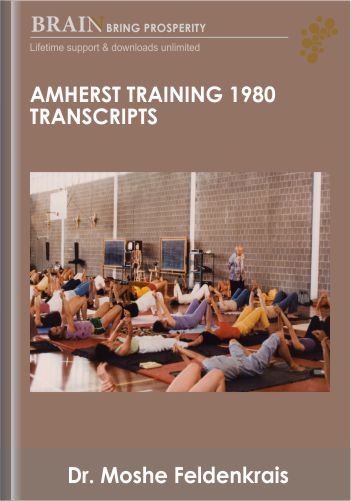
 Purchase this course you will earn
Purchase this course you will earn 